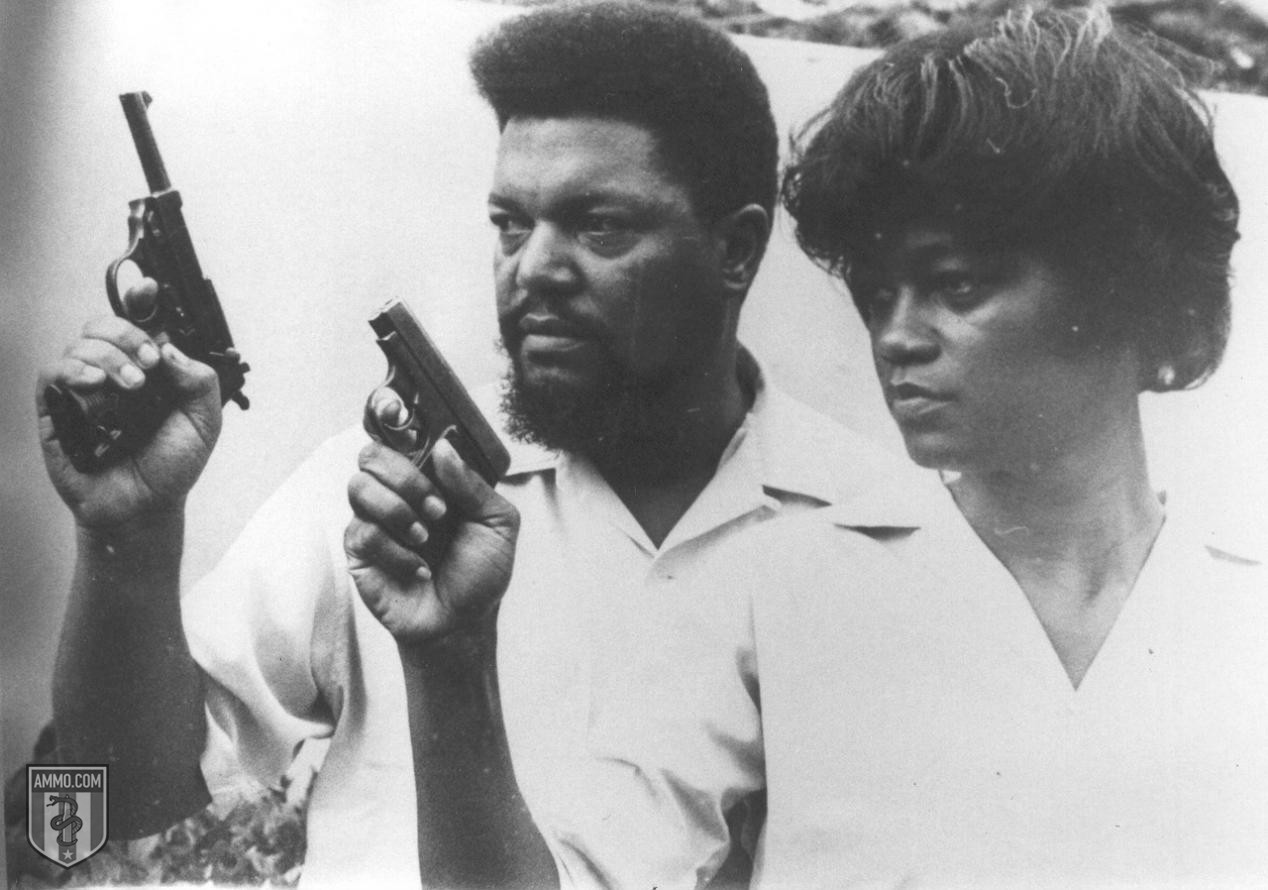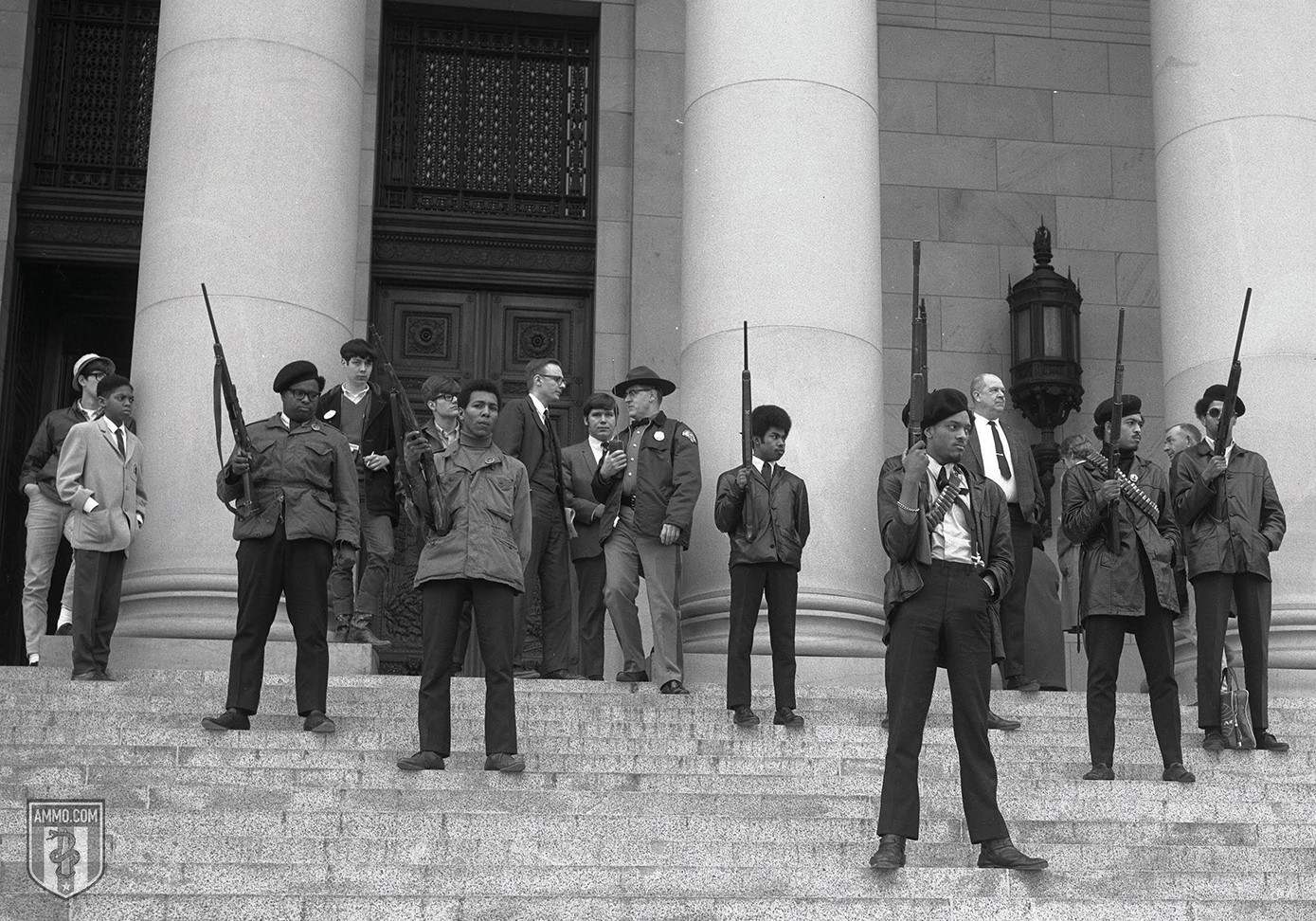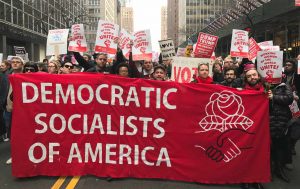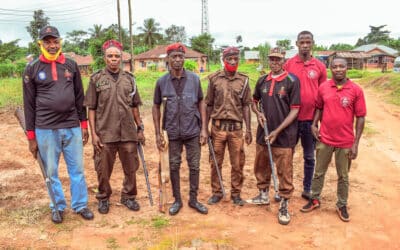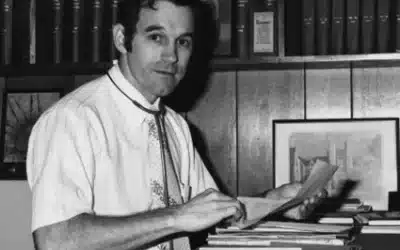With the violent crime rate increasing disproportionately in urban communities, it’s no surprise that a recent phone survey of black voters found that 80 percent felt gun violence was an “extremely serious” problem. However, it seems this surge in violence actually has many in the black community changing their views on gun ownership.
In 1993, 74 percent of African-Americans favored gun control. Fast forward to 2018, and a Crime Prevention Research Center report found that concealed carry permits are on the rise – especially among minorities. In Texas alone, the number of blacks with permits has grown by almost 140 percent since 2012. Overall, this growth in the number of permits for blacks is happening 20 percent faster than for whites.
This increasingly positive attitude toward firearms might not be a new paradigm, but rather a return to form.
In Ammo.com’s three-part series on militias in America, Early American Militias: The Forgotten History of Freedmen Militias from 1776 until the Civil War and American Militias after the Civil War: From Black Codes to the Black Panthers and Beyond provide detailed looks at the history of militias in early and post-Civil-War America. This guide takes a final look at how militias played a vital role in the Civil Rights Movement, an important piece of America that’s missing from our history books.
Robert F. Williams and Armed Black Self-Defense
Few are aware that weapons played a pivotal part in the American Civil Rights Movement, specifically through Robert F. Williams. A curious figure in American history, Libertarians are quick to lionize him and his radical approach to black self-defense, but they’ll quickly cool when they learn of his longstanding association with leftist totalitarian politics and governments. Conservatives likewise might initially find themselves infatuated with a man who did not wait for “big government” to deliver his people, but rather leveraged the Second Amendment. Liberals, for their part, might find something to admire in Williams’ notion of liberation, but will recoil in horror when learning that his preferred vehicles for change were the NAACP (great!) and the NRA (terrible!).
Williams was many things, but chief among them was a harbinger of things that would come long after he had fled the United States for what he considered greener pastures in Fidel Castro’s Cuba. He stands across the divide, separating the non-violent, electoral, protest-oriented phase of the Civil Rights Movement in the early 1960s from the later, more militant and direct-action-oriented phase that would arise in the mid-to-late 1960s as the movement became more frustrated (particularly after the assassination of Martin Luther King).
Born in North Carolina in 1925, Williams’ experience mirrors that of many African-Americans of his generation. He moved to Detroit as part of the Second Great Migration, where he was privy to race rioting over jobs. He served in the then-segregated United States Marine Corps for a year and a half after being drafted in 1944. Upon returning to his North Carolina hometown, Williams found a moribund chapter of the NAACP. With only six members and little opposition, he used his USMC training to commandeer the local branch and turn it in a decidedly more military direction. The local chapter soon had over 200 members under Williams’ leadership. If nothing else, his leadership was effective at building the movement from the ground up.
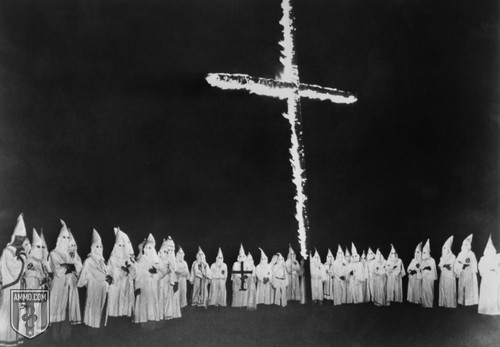
Monroe’s Black Armed Guard wasn’t a subsidiary of the Communist Party, nor an independent organization like the Black Panther Party that would use similar tactics of arming their members later. In fact, “Black Armed Guard” was nothing more than a fancy name for an officially chartered National Rifle Association chapter.
His 1962 book, Negroes With Guns, was prophetic for the Black Power movement to come later on in the decade. But Williams is noteworthy for his lack of revolutionary fervor, at least early on. Williams was cautious to always maintain that the Black Armed Guard was not an insurrectionary organization, but one dedicated to providing defense to a group of people who were under attack and lacking in normal legal remedies:
To us there was no Constitution, no such thing as ‘moral persuasion’ – the only thing left was the bullet…I advocated violent self-defense because I don’t really think you can have a defense against violent racists and against terrorists unless you are prepared to meet violence with violence, and my policy was to meet violence with violence.
Robert Williams
Williams himself is an odd figure, not easily boxed into conventional political labels. While often lauded, for example in a PBS Independent Lens hagiography, it’s worth noting that Williams spent a number of years operating Radio Free Dixie, a radio station broadcast from Communist Cuba that regularly denounced the American government. He urged black soldiers to revolt during the Cuban Missile Crisis. Williams personally praised the Watts riots in 1966, simultaneously invoking “the spirit of ‘76.” Radio Free Dixie ceased operations in 1965, when Williams relocated to Red China at the personal request of Chairman Mao Zedong (hardly a proponent of freedom). Williams happily accepted, and this is where he remained for the rest of his exile from the United States – avoiding dubious charges of kidnapping white activists, Williams claimed he was defending from Klan attacks.
However, it’s not entirely fair to brand Williams a pliant, party-line Communist, either. Even while hobnobbing with the elite of the Chinese Communist Party, Williams regularly denounced the U.S. Communist Party as “Gus Hall’s idiots.” To some degree, this reflects internal divisions in the international Communist movement at the time, with national parties and internal factions lining up between Moscow and Beijing. But he also refused to rule out any sort of deal between himself and the federal government – or the far right, for that matter – on the grounds that he would do anything to avoid prison. He gave speeches in China denouncing the United States, including one where he associated Robert Kennedy with an alleged system of international white supremacy.
Upon returning to the United States, Williams was put on trial for the alleged kidnapping and was extradited to North Carolina from Michigan. By the time his case went to trial in 1975, it was a cause celebre among the American far left and the charges were soon dropped. His later years were marked by a lack of political activity. He received a grant from the Ford Foundation to work in the Center for Chinese Studies at the University of Michigan. He seemed to have little interest in leading the more militant, Black Power incarnation of the Civil Rights Movement that had emerged in his exile. The title of his New York Times obituary is rather telling: “Outspoken and Feared but Largely Forgotten.”
Williams is a confusing figure, one that’s hard to figure out and even harder for people of any political persuasion to take a hard line in favor of. An iconoclast and a malcontent, he was simultaneously capable of self-sacrifice, exiling himself from his homeland, as well as blatant (and almost certainly appropriate) self-interest, ready to cut any kind of a deal to keep himself out of jail. No matter what your opinion is of Robert F. Williams and his role in bringing together blacks and guns, one thing’s for sure – we won’t be seeing him on the front of dollar bills any time soon.
Ronald Reagan, The Black Panthers and Gun Control
Around the time Williams returned, gun control was getting some pretty heavy winds in its sails from some rather unlikely sources: Then-California Governor Ronald Reagan (yes, that one) passed the Mulford Act, stating that he saw “no reason why, on the street today, a citizen should be carrying loaded weapons.” At the time, however, it was pretty widely understood that the bill was drafted and fast-tracked in response to another band of gun-toting African-Americans – the Black Panthers.
At the time, the Black Panthers were something between Copwatch and Meals on Wheels. They’re mainly remembered today for two things: Their literacy programs and their penchant for hanging out at government buildings armed to the teeth. However, the Panthers’ original activities were far more mundane. They would follow police around, armed with law books, municipal codes and firearms, ensuring that police were held to the letter of the law. What brought matters to a head was the day the Black Panthers showed up on the steps of the California State Capitol, locked and loaded.
The Mulford Act, colloquially called “The Panther Act,” effectively ended open carry in the State of California.
Pacifists Outsourcing Violence: The Curious Tale of C.O. Chinn and Martin Luther King
C.O. Chinn is another figure you won’t read about in the Civil Rights Chapter of your history book. Chinn’s allegiance to firearms was originally just good business sense. He was, among other things, a bootlegger and the owner of a rhythm-and-blues club in Canton, Mississippi. He was also heavily armed, causing the segregationist sheriff to once call him the only other “bad son of a b*tch” in the county besides himself.
Chinn is instructive for one reason: Even officially “nonviolent” sectors of the Civil Rights Movement like SNCC and CORE were happy to outsource their violence to Chinn and his band of rough and readies. Violence for thee, but not for me. As CORE’s Mississippi field secretary noted:
[Chinn] believed we were doing the right thing and felt he should be supporting us and providing us with a certain amount of protection. Everything he had was just put at our disposal. There was never a time you needed to go someplace that he didn’t assign somebody to go with you. He was his own man in his own mold. I don’t think there were many parts [of him] that came from somewhere else.
Mateo “Flukie” Suarez, CORE’s Mississippi field secretary
Beyond Chinn, it’s worth noting that guns were not the exclusive domain of the more militant wing of the American Civil Rights Movement. Martin Luther King applied for a gun permit in 1956, after having his house bombed. Unsurprisingly, the State of Alabama did not see fit to “may issue.”
The Marin County Courthouse Incident and Increasing Militancy
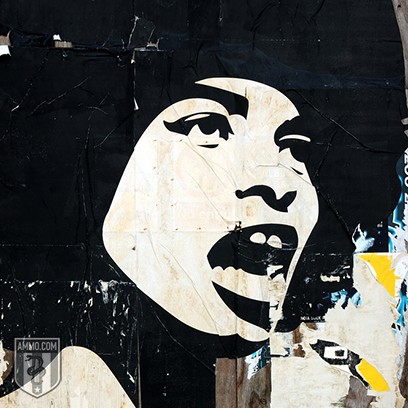
So what’s the lesson to be learned here? No one is going to shoot anyone for being part of a black rights organization in the current year. Indeed, you’re far more likely to get blackballed from your industry for an off-color joke on Twitter, something that hardly requires lethal force as a response. Still, two things stand out when surveying the less non-violent aspects of the American Civil Rights Movement:
The NRA as an Organ of Individual and Collective Self-Defense
First, the narrative of the NRA as some sort of crypto-racist organization is simply false. In the first place, the NRA is a single-issue organization, which is how Harry Reid is able to obtain a “B” rating and get campaign cash from them, despite voting as a party-line Democrat on virtually every non-gun-related issue. More to the point, the NRA has historically opposed laws that were virtually tailor made to deny African-Americans the right to keep and bear arms. Many gun control laws to this day stem from the KKK’s fear of armed and independent minorities. The Rosewood Massacre in 1923 – a bloodbath led by a white mob that resulted in the destruction of an entire black community in Florida – was a clear example of how an armed black people could prevent future KKK raids.
Second, the uptick in black NRA members as well as gun ownership and firearms acceptability in the black community isn’t an anomaly, but a reconnection with a deeper past stretching back to Reconstruction. The right to keep and carry arms was even mentioned in the infamous Supreme Court case of Scott v. Sandford, where the enslaved Dred Scott sued for his freedom. He lost that fight, but the words from that courtroom live on to this day.
[If black people] were entitled to the privileges and immunities of citizens, it would exempt them from the operation of the special laws and from the police regulations which they considered to be necessary for their own safety. It would give to persons of the negro race, who were recognized as citizens in any one State of the Union… the full liberty of speech in public and in private upon all subjects upon which its own citizens might speak; to hold public meetings upon political affairs, and to keep and carry arms wherever they went. And all of this would be done in the face of the subject race of the same color, both free and slaves, and inevitably producing discontent and insubordination among them, and endangering the peace and safety of the State.
It’s not that black gun ownership is “good” per se or deserves to be lauded any more than white or Hispanic or Asian gun ownership. The point is that people who are in danger, or at least feel that they are, will often reach out to firearms to protect themselves – especially if state actors seem reluctant or incapable of enforcing the law and protecting them and their families. In this sense, the desire for weapons for self-defense isn’t just a universal impulse, it’s also a basic democratic right.
“The first right” is the one that secures all the others, sure. But an armed insurrection in the streets isn’t a necessary component. In the case of Monroe, North Carolina, all it took was returning fire against one attack.
After all – God made men, but Sam Colt made them equal.
“Negroes With Guns: The Untold History of Black NRA Gun Clubs and the Civil Rights Movement” originally appeared in the Resistance Library on Ammo.com.


